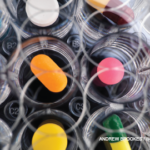Despite clear evidence supporting the benefits of exercise, approximately 25% of patients still engage in exercise less than once a week, even though they acknowledge the numerous potential benefits.11,12
For many individuals, including those for whom affordability and psychosocial factors are a barrier, making exercise accessible is crucial. Additionally, enhancing exercise habits among patients with axSpA can be attained by ensuring the intervention incorporates behavior change guidance.13 Promoting group exercise participation can also serve as a motivational factor.13
How to Monitor Physical Activity
To optimize health behavior changes related to exercise, it is helpful to accurately monitor physical activity in patients with axSpA in both clinical research and clinical practice settings. The general gold standard for measuring total energy expenditure is the doubly labeled water method. However, this is expensive, time-consuming and has a high subject burden. Therefore, it’s not feasible in daily clinical practice.
Physical activity monitoring apps, which are easily accessible, and accelerometers can be used as alternatives. A notable drawback of these instruments is the insufficient specification of the type of physical activity, making it difficult to identify potential areas for improvement, including activities promoting muscle strength.
Self-report questionnaires are low in cost, have a low patient burden and are also easily applicable in clinical practice. Importantly, information about the specific type of activity can be included. Available self-report questionnaires are the modified Short Questionnaire to Assess Health-enhancing physical Activity (mSQUASH) and the International Physical Activity Questionnaire (IPAQ).14,15
Among patients with axSpA, the mSQUASH tool showed better correlation with the accelerometer, was more sensitive to change and showed fewer missing values than IPAQ. Patients preferred the mSQUASH due to its fewer questions and clearer layout.16 Despite limitations, such as subjectivity and recall bias, the mSQUASH’s focus on physical activity in an average week reduces variation and improves reliability.
However, both mSQUASH and IPAQ tend to overestimate activity intensity, likely due to socially desirable responses.14 Overall, the mSQUASH is a valuable tool for standardizing daily physical activity assessment, aiding in patient self-management and personalized exercise planning.
The Role of Physical Therapy
In addition to physical activity, physical therapy is a cornerstone of non-pharmacological therapy for this population. The 2019 ACR/Spondyloarthritis Research and Treatment Network (SPARTAN)/Spondylitis Association of America (SAA) guidelines strongly recommend physical therapy for active and stable axSpA.17
Physical therapy for patients with axSpA may include therapeutic modalities (i.e., heat, ultrasound) and manual therapy (i.e., massage), but such passive interventions usually serve as adjunctive treatment to provide short-term symptom relief.


